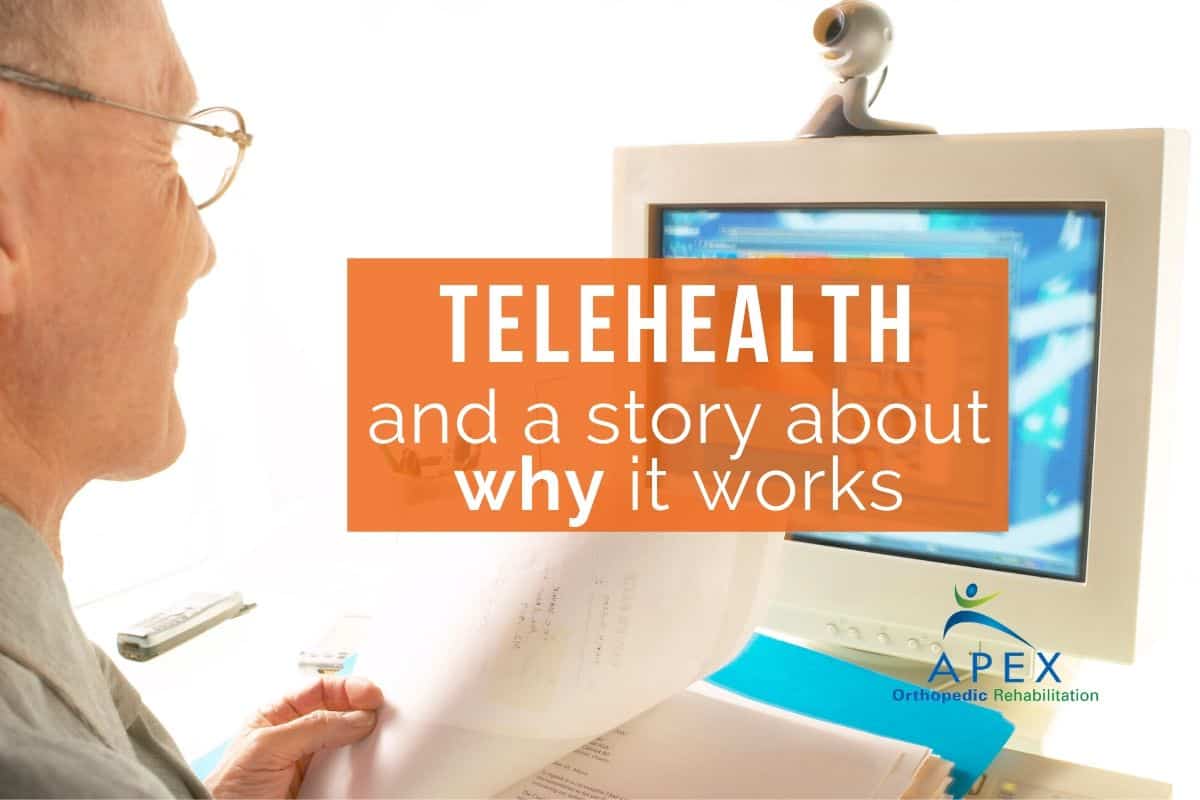He didn’t even touch me … but I felt better?
People sometimes don’t realize the positive impact their own movements have on their health. Coming out of physical therapy school, you just couldn’t wait to finally apply your training to help people feel better. Part of the training included “hands on” techniques like stretching or joint mobilizations, myofascial stretching, and acupressure, to name a few. We all recognized the value of the patient’s movements through stretching, strengthening, and endurance training but the ability to help someone through your “hands” is viewed as a key component to helping someone get better.
You Will Love This Story:
That idea of a patient not improving without some form of “hands on” care seemed possible, but not the norm. Very early on in my career, in the early fall in an outpatient clinic in Fort Lee, New Jersey, I distinctly remember such a case of a patient improving without any hands on care. The patient was around 40 and the owner and operator of a local gas station and repair shop. When I first met him, he was walking with his wife, hunched over and walking with a great deal of hesitation, having difficulty raising his right foot. The woman at the front desk, Wendy, asked if I could bring him back early because he was clearly having trouble just sitting in the waiting room.
At this point, I had been treating for under a year and had recently taken a McKenzie Method course that focused on helping people with lower back problems. I took a quick glimpse into the waiting area from the main floor. I could see him getting out of the chair in the waiting room to hand in the paperwork. After a couple of quick attempts to get out of his chair, he got a hand from his wife, who lifted him up, causing him to “buckle” in pain.
I thought to myself, “I don’t know if I can help this guy,” remembering the physician mantra “above all do no more harm.” In the three steps it took me to get to the waiting room, I quickly made a pact with myself that I wouldn’t touch him until I was absolutely sure I could help him.
As a recent graduate, I hadn’t seen someone quite so hunched over before; it looked like he was a backwards “C”. After learning he had an epidural, lots of pain meds, MRI and x-rays (nothing worked), I felt even more pressure to provide him a bit of relief.
After talking to him and getting a good history, we proceeded with the physical examination which included taking the patients through a series of movements and positions to see if one would improve the pain and overall mobility. For him, it was a simple lying prone on his stomach with five pillows under his waist. Over the course of 15 minutes, we were able to slowly lower him until he could tolerate lying on his stomach without a single pillow.
During that time, my only “hands on” technique was helping him remove the pillows that allowed him to slowly lower to the table. Pretty fancy technique! The focus was on monitoring his pain levels and educating him on what was “good” and “bad” pain and asking him to make subtle adjustments in his posture.
After this careful assessment, this once very hunched over man managed to actually stand upright without slowing his pace as he left the room. He took a few steps, smiled, and sarcastically pointed out to Wendy (our receptionist), “He didn’t even touch me … I did all the work”. In fact, he did all movements on his own, which is part of the safety of the McKenzie Method’s systematic way of evaluating a patient. He knew what movements he had to do for the next few days, how to correct it and build on his progress.
Overall, he responded very well and was able to return to work within a short period of time. Most of the success for him rested in his ability to know which movements improved his lower back and leg pain and what things to avoid. This is a great example of a patient healing himself with some guidance from a rather green, inexperienced physical therapist. Not all cases go that way. This one was a success with limited hands on care.
In the new world of telehealth, we have options for those with musculoskeletal problems that don’t necessarily require hands on care, MRI or an x-ray, but rather a simple orthopedic evaluation. With the recent changes in healthcare, we have to be a little more creative in how we approach helping our patients with education being the central pillar of any approach. As we attempt to treat patients in our new world and create social distance, we have to embrace change.
If we can’t, the McKenzie method system helps us know in a short number of visits who will benefit from the approach and who needs to be referred to another practitioner. This is one of reasons we encourage anyone to discuss their condition over a video chat or phone call to see if we can help you.
Check out our telehealth options and give us a call.
I am a very athletic person who suffered a hamstring tear at the beginning of the coronavirus epidemic. There was no way I was going to go into a doctor’s office or see a physical therapist live. I was at a loss until a friend in the healthcare industry suggested I contact Tom Willemann of Apex Orthopedic Rehabilitation. Tom’s response was immediate. He first put me in touch with a well-known sports medicine doctor for a virtual visit. Right after that, the two of them coordinated a virtual physical therapy plan for me.
I honestly was skeptical of virtual care because I’ve had physical therapy before and so much is involved with in person demonstration and physical manipulation.
But from the get go, Tom was professional and came up with a plan even though virtual medicine is new to us all. He first evaluated my injury via video and then he set a virtual schedule to establish flexibility and work on rebuilding strength.
It’s important to me that my healthcare professional listens to me. There is no way I wanted to sit back with my injury and just let it heal. I wanted to go for walks and continue cycling. Tom heard me and was professional in telling me when to take things slow and went to go out and give exercise a try. He is encouraging, and always has an eye on my goal, yet is sensible and emphasizes safety first in the recovery plan.
For these reasons and more, I highly recommend Tom Willemann and Apex Orthopedic Rehabilitation.
Linda B., Ridgewood, NJ
Personalized Physical Therapy Services in Paramus and Ridgewood NJVoted the Most Attentive Orthopedic Physical Therapists in Bergen County
Results-Oriented Back Pain, Neck Pain, Knee Pain Treatment and Solutions
Affordable and Personalized Physical Therapy Clinic serving Paramus and Ridgewood NJ



